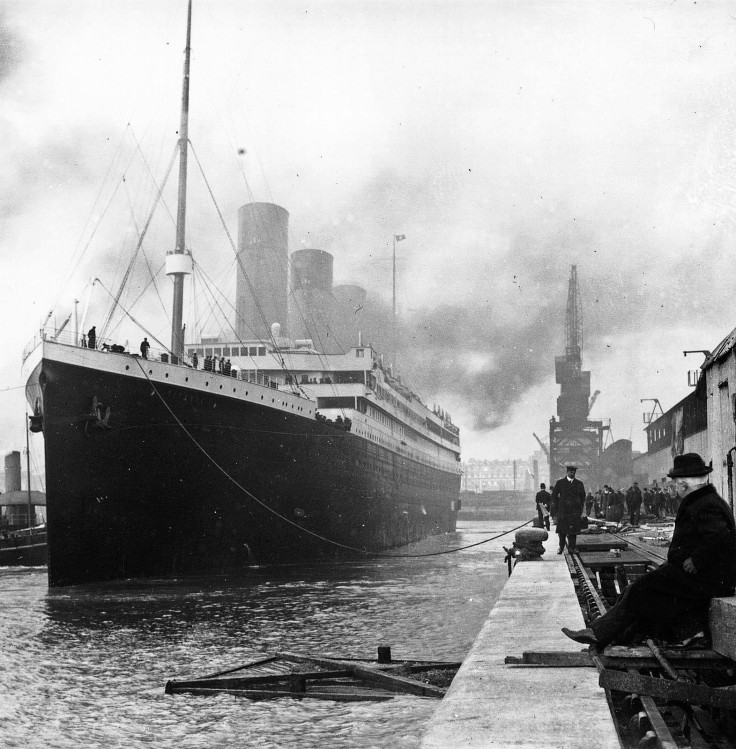Titanic Facts 2015 Anniversary: 19 Surprising Details You May Not Know About The Famed Ship And Its Tragic Ending

This week marks 103 years since the RMS Titanic sank on its maiden voyage from England to the U.S., a tragedy that shocked the world and inspired decades of searches for its wreckage, several blockbuster movies and endless tales about the passengers who lost their lives on April 15, 1912. More than 1,500 people, nearly two-thirds of the ship's passengers and crew, died in the early morning hours of that fateful day when the luxury ocean liner was ripped apart by an iceberg.
Historians say the epic collision heard around the globe could have been avoided. Here are 19 little-known facts about the ship they said couldn’t sink.
1. Around 3,000 workers labored for two years and two months to build the Titanic, the largest passenger steamship ever conceived at the time it was completed in 1911. It measured 269 meters (883 feet) in length and 53 meters (175 feet) tall. Nearly 250 workers were injured during its construction and two were killed – a surprisingly good safety record back then.
2. The ship’s celebrated, state-of-the-art design also was its biggest flaw. The 15 watertight bulkheads that were said to make it “unsinkable” were the very things that sent it plummeting toward the ocean floor, according to History. Water spilled over the individual compartments, meaning the bulkheads weren’t really sealed.
3. The iceberg that sank the Titanic has been floating around the North Atlantic for about 3,000 years.
4. The ship cost $7.5 million to build, the equivalent of about $176 million today.
5. Although the ship had four cream- and black-colored funnels, or steam chimneys, only three were operational. The fourth was just for show as the Titanic’s designers thought it looked better.
6. The ship featured a gymnasium, squash court, a Turkish bath, a swimming pool and two libraries.
7. The price of the most expensive first-class ticket to New York was about $4,350, or nearly $70,000 today.
8. The ship’s wealthiest passenger was John Jacob Astor IV, an American businessman, investor and real estate builder born in Rhinebeck, New York. He was worth an estimated $85 million at the time of his death aboard the Titanic, making him among the richest people in the world at the time.
9. While the Titanic’s first-class travelers had the luxury of private bathrooms, third-class passengers had just two bathtubs per 700 people.
10. Only men were allowed into the first-class smoking lounge.
11. It took 20 horses to transport the ship’s main anchor, which weighed 20 tons.
12. The wireless operator aboard the Titanic ignored six iceberg warnings the ship received the day of its collision. He was supposedly preoccupied with transmitting passenger messages instead.
13. The temperature of the ocean water around the sinking ship was negative 2 degrees Celsius, or about 28 degrees Fahrenheit.
14. Once in the frigid water, Titanic passengers had an average just 15 to 45 minutes left to live. Most victims died of hypothermia, in which the very low temperature of the body causes internal organs to fail.
15. It took the ship about 160 minutes, or two hours and 40 minutes, to sink after it hit the iceberg.
16. The bow of the ship pierced 18 meters (60 feet) into the sea bed.
17. The debris field left by the ship was an area of approximately 8 kilometers by 4.8 kilometers (5 by 3 miles).
18. Nearly 330 bodies were pulled from the Atlantic as teams set out to recover victims for burial. However, 119 of them were too damaged to take back to shore and were buried at sea.
19. It took 73 years to locate the Titanic’s wreckage. Several attempts to find the ship were unsuccessful until a 1985 expedition discovered the wreck 13.2 miles from the ship’s last known location. The remains of the Titanic lie 3,700 meters (12,000 feet) below the surface of the ocean.
© Copyright IBTimes 2024. All rights reserved.






















